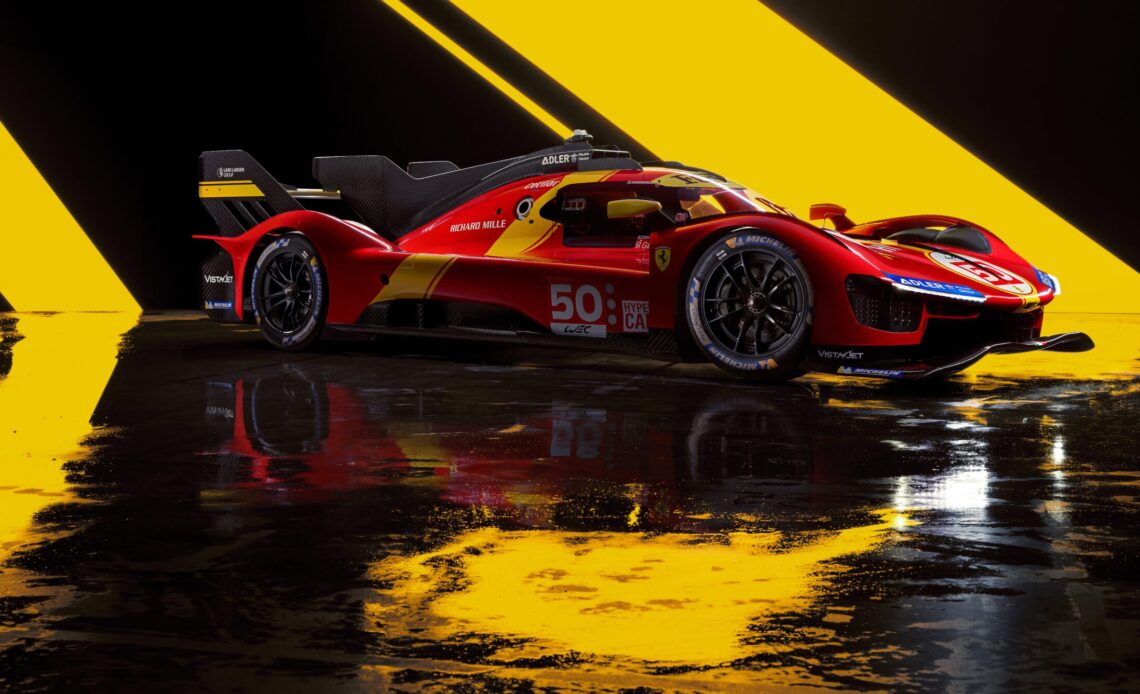Ferrari has taken the wraps off the 499P, its World Endurance Championship LMH contender, that will debut at the series opening round at Sebring in March 2023. At the grand finale of its Ferrari Mondiali in Imola at the end of October 2022, Ferrari’s first prototype since the 312P, which raced 50 years ago, was unveiled during the gala dinner at the end of a weekend celebrating Ferrari in racing. The 499P is a ground-up design from Ferrari’s base in Maranello, with all major departments within the company brought together to contribute to the final design. The result is stunning, with a markedly complicated aerodynamic concept and a production-derived engine.
The car has yet to pass its homologation tests, and development work, which started on track in July 2022, is ongoing. Ferrari expects to have homologation completed around the end of 2022 ahead of its Florida debut. The team says it has completed 11,000km of testing and hopes to double that before Sebring. So far, the car has been reliability testing at circuits around Italy, and it will shortly move into the performance phase.
Although two cars will be run in the WEC by AF Corse, Ferrari has already hinted that customer cars may be available for the following year. Teams such as Risi Competizioni are keen to run the car in the IMSA series in 2024. Other customers will seek to run cars in the World Endurance Championship alongside the Ferrari works team.
Powertrain
Competing under LMH regulations (as opposed to LMDh), the chassis, engine, hybrid system and running gear are all bespoke by Ferrari. A derivative of Ferrari’s 296 GT3 engine, a hot vee, twin-turbo 3.0-litre 120-degree V6, will power the 499P. However, that’s where the similarity ends, as the prototype engine is a stressed member in the chassis, unlike in the 296 GT3. The engine’s weight, the turbos and the internals have all been updated to meet the requirements of prototype racing. ‘The design and structural requirements are different,’ said Ferdinando Cannizzo, head of Ferrari Attivita Sportive GT, tasked with developing the car. ‘You need to carry the gearbox and suspension; everything passes through the engine structures. If you look at the two engines, they are different, but the architecture is the same. The turbochargers are different [compared to the GT3 variation of the 296 GTB roadcar], the inside is different, and the weight is unbelievably different. ‘There is no reward for using a production-based…
Click Here to Read the Full Original Article at Racecar Engineering…

